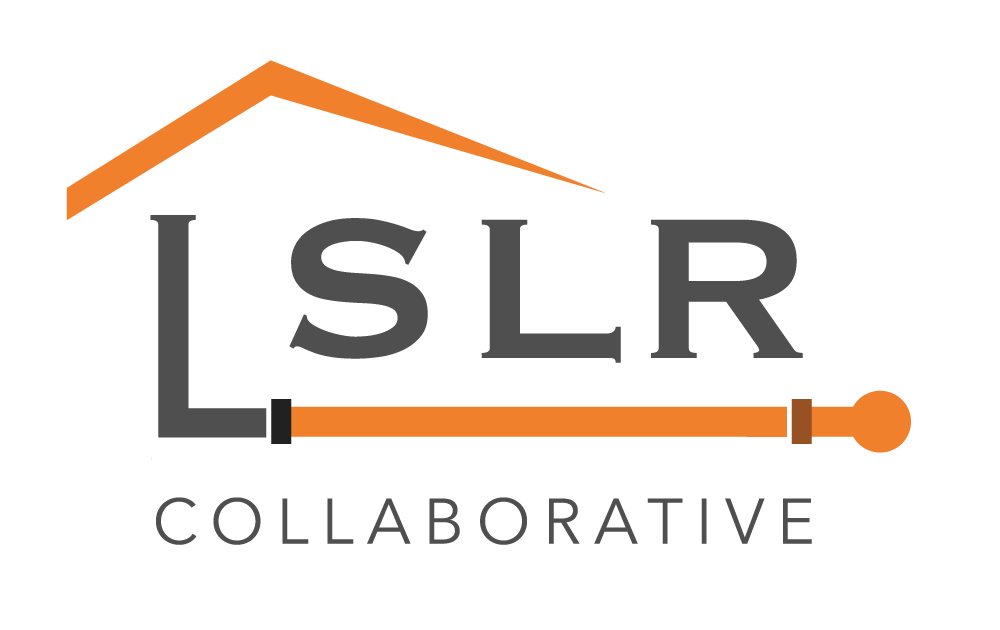|
The Batavian
By Mike Pettinella See the full article. The City of Batavia has tapped into a New York State program designed to help municipalities “get the lead out.” Batavia City Council members, at their Conference Meeting via Zoom tonight, are expected to hear from Public Works Director Matt Worth about a $554,112 grant the City has received from the NYS Department of Health’s Lead Service Line Replacement Plan. Worth said he and his staff have developed a work plan that is designed to replace 75 lead service lines on Swan, Hutchins and Otis streets on the City’s Southside. “We suspect that 20 to 30 percent of our residential services may still be lead -- from the water main to the curb shut-off,” Worth said. “We have never observed it from the curb shut-off into the house.” See the full article. Fox 11
See the full article. GREEN BAY (WLUK) – The Public Service Commission of Wisconsin unanimously approved a Lead Service Line Replacement Program for Green Bay Water Utility. This program is made possible through 2017 Leading on Lead Act. The Leading on Lead Act provides an innovative funding mechanism to address the problem of lead-laden water. The act allows governments to pass an ordinance to use ratepayer dollars for a low or no-interest loan or an up to 50 percent grant for private property owners to replace their lead service lines. As public health continues to be on the minds of Wisconsinites, a positive step was made today to address the issue of lead poisoning in Green Bay residents. The plan approved by the PSC isn’t Green Bay’s first effort to address lead-laden water, but today’s action lays a path to finish ridding their water infrastructure of lead service lines. This plan doesn’t just help residents with lead laterals, but the entire community will benefit as public health improves, creating long-term economic savings, and Utility costs decrease as anti-corrosive materials become less necessary and newer infrastructure reduces the risk of leaks or failures. See the full article. LI Herald.com
See the full article. By Jennifer Corr The City of Glen Cove will be accepting an amount not to exceed $627,327 grant from the New York State Department of Health to fund new water pipes as part of the NYS DOH Lead Service Line Replacement Program. “We’re going to replace lead lines, which is a good thing and we’re required to contribute zero,” said Rocco Graziosi, the project manager at Public Works who is heading the operation. New York’s Clean Water Infrastructure Act of 2017 required the DOH to implement the LSLRP in an effort to prevent lead exposure. According to the DOH, service pipes that contain lead can corrode, causing lead to enter drinking water. And while a lead service line does not mean a household has a lead issue, the Environmental Protection Agency estimates that contaminated drinking water can contribute 20 percent or more to a person’s lead exposure and infants who consume formula can receive 40 to 60 percent of their exposure to lead from contaminated water. See the full article. Daily Times Chronicle
See the full article. WINCHESTER - Town Treasurer Sheila Tracy requested the Select Board approve a loan to the town from the MWRA Local Water System Assistance Program/Lead Service Line Replacement Program (Phase 3). She said the loan would be used to continue Winchester’s program to remove goosenecks. It’s an interest free loan in the amount of $600,000 and the town will repay it in 10 installments of $60,000 each, over a 10 year period beginning May 15, 2021. The motion, read by Select Board member Susan Verdicchio said, “voted: that the sale of the $600,000 Water Bond of the town dated June 1, 2020 to Massachusetts Water Resource Authority (the ‘Authority’) is hereby approved and the Town Treasurer or other appropriate town official is authorized to execute on behalf of the town a Loan Agreement and a Financial Assistance Agreement with the Authority with respect to the bond. The bond shall be payable without interest on May 15 of the years and in the principal amounts: $60,000 each year from 2021 through 2030. See the full article. Bismarck Tribune
See the full article By Dave Thompson Bismarck has received a $5 million loan from the state’s drinking water revolving loan fund to replace cast iron water mains in the downtown area. The area in question is between Boulevard Avenue and Main Avenue, and Washington Street and 10th Street. The project will begin this summer, Bismarck Utility Operations Director Michelle Klose told Prairie Public. The area also has a lot of lead service lines, according to Klose. As a part of the loan package, the state’s Department of Health and Department of Environmental Quality granted the city $500,000 to help homeowners replace those lines, she said. The program would cover up to 90% of the replacement cost. See the full article. Chicago Tribune
By Carrie Napoleon See the full article. Old lead water lines to abandoned homes and vacant lots in the Marshalltown and University Park neighborhoods in Gary are the latest lines being replaced by Indiana American Water Co. The work is part of a multi-year, statewide effort by the water utility to replace all lead service lines throughout the state, according to Joe Loughmiller, external affairs manager for Indiana American Water Co. Water lines to occupied homes will have to wait until the social distancing measures enacted by Gov. Eric Holcomb in an effort to stem the spread of the novel coronavirus, COVID-19, are lifted, he said. “We have been very proactive in Indiana dealing with the issue of lead service lines,” Loughmiller said via email. The company regularly samples for lead pursuant to the EPA’s Copper Rule and continue to be in compliance across the state, including Northwest Indiana. See the full article. Bennington Banner
By Jim Therrien See the full article. BENNINGTON — The Select Board received some "incredibly good news" this week from Town Manager Stuart Hurd, who said Bennington will receive up to $11 million in reimbursements to replace lead water service lines connecting properties to town mains. Hurd said the town landed the large authorization, which comes through the state Drinking Water Revolving Fund, because of preliminary testing and mapping that began here in 2018, putting Bennington ahead of other municipalities seeking funding. Jason Dolmetsch, president of MSK Engineering and Design, had earlier advised the board about a pending opportunity to get 100 percent state reimbursement to replace building service lines containing lead — a toxic substance that was banned in 1986 but used extensively in older water system connections. See the full article. Wisconsin Has Hundreds Of Thousands Of Lead Water Lines, But Is Also A Leader In Addressing Issue4/30/2020
WXPR
Ben Meyer See the original article. More than 150,000 Wisconsin homes, businesses, schools, and daycares get their water through lead pipes, according to data newly compiled by the Environmental Defense Fund. Consuming even small amounts of lead can lead to behavioral, learning, and cognitive problems in children. Furthermore, for 300,000 water lines, Wisconsin cities don’t even know what the pipes are made of. Even so, the Environmental Defense Fund calls the state “ahead of the curve” on identifying and addressing lead piping. Cities in northern Wisconsin provide examples of progress. A few years ago, Eagle River announced the city would pay to replace all existing lead water service lines for homeowners across the city, about 60 of them. Because the lines are underneath private property, they’re usually the homeowners’ responsibility. “It worked out great for those property owners,” said utility manager Mike Sanborn. “They were able to get their services replaced to copper at no charge to them.” The city is just about done and just about lead-free. It’s something Sanborn doubts could have been accomplished without the city covering the cost. “Especially right now, with what’s happening with the virus, and the lack of people working, it definitely would have been a challenge to get them to commit to spending any money on their service lines,” he said. Eagle River got a half-million dollars from the DNR in 2017 and 2018 for the project. CNT
See the full blog. From inventories to public education, here's how local leaders can take action on lead An estimated 6 million leaded service lines(link is external) deliver drinking water to households across the United States, and when these lines leach lead into drinking water, it poses a serious public health problem. In the midst of the COVID-19 pandemic, states and cities are working to issue moratoriums on water shutoffs and reconnect service to those that have been shut off—but it’s important to recognize that running water doesn’t necessarily mean clean water. The Center for Neighborhood Technology (CNT) and Metropolitan Planning Council(link is external) (MPC) teamed up to apply lead service line inventory and planning practices in two suburbs south of Chicago—Flossmoor and Hazel Crest—to better understand the challenges and opportunities. Here are some steps any community can take. Over the past several years, in large part prompted by the public health crisis in Flint, MI, caused by lead in drinking water, states and communities have been outlining policies and practices to get the lead out of drinking water supplies. While the focus in this current moment is to ensure that our communities come out on the other side of COVID-19 as unscathed as possible, there is a huge opportunity to ensure that stimulus and recovery dollars are invested in improving how systems work for people, including making infrastructure safer for renters and owners. See the EDF blog.
Note to readers: As we all grapple with the grave global health challenge from COVID-19, we want to acknowledge the essential service that the public health professionals at water utilities provide in delivering safe water not only for drinking but for washing our hands and our surroundings. In the meantime, we are continuing to work towards improved health and environmental protections – including reducing lead in drinking water. We’ll plan to keep sharing developments regarding lead in drinking water that may be useful to you. In the meantime, please stay safe and healthy. With the comment period now closed on the Environmental Protection Agency’s proposed revisions to its Lead and Copper Rule (LCR), agency staff are busy reviewing the 687 distinct comments submitted to the docket with a goal of finalizing the rule by the end of the year. To help water professionals plan ahead, the cover article in the March edition of Journal AWWA walks readers through the proposal and its implications. It ends with six suggestions to water systems that include developing a service line material inventory and identifying funding strategies to accelerate full lead service line (LSL) replacement. With this suggestion in mind, we are continuing our work evaluating state efforts to develop LSL inventories by taking a closer look at reporting by Wisconsin municipal and private water utilities[1] to the state Public Service Commission (PSC) for calendar year 2018.[2] Of the other states with mandatory inventory reporting, we have previously covered Illinois in detail and will evaluate Michigan’s newly released reports soon. The only other state with mandatory reporting is California, but it has limited value because it only covers the portion of the service line owned by the utility and excludes the portion on private property. Wisconsin’s reporting is similar to Illinois’, but more detailed Like Illinois, Wisconsin requires annual reporting and posts the information online in a publicly accessible format as it is received. However, Wisconsin differs by requiring utilities to:
See the full blog. |
Have a suggestion for an article or blog to add?
Let us know! Type
All
Date
April 2023
|


 RSS Feed
RSS Feed